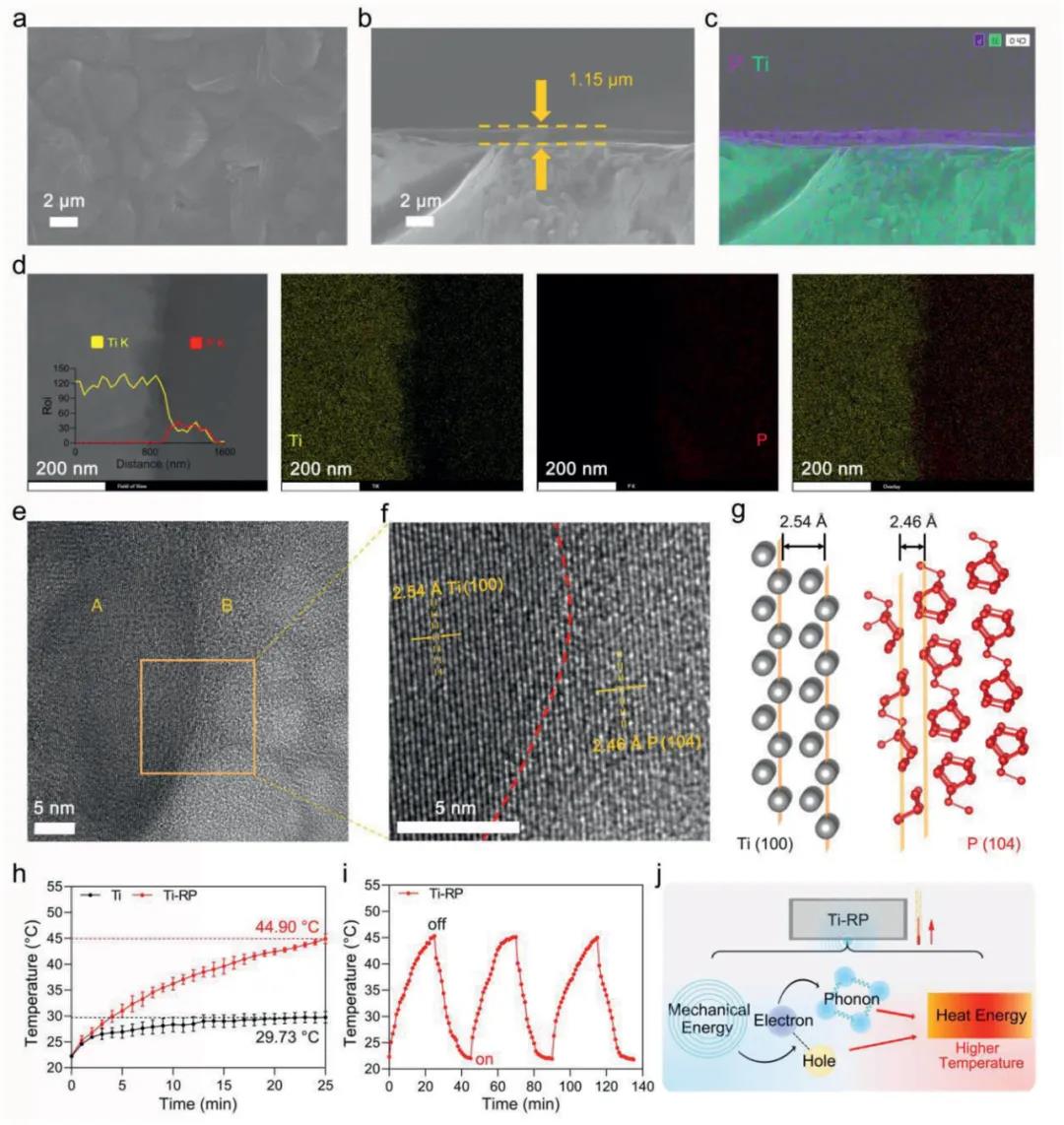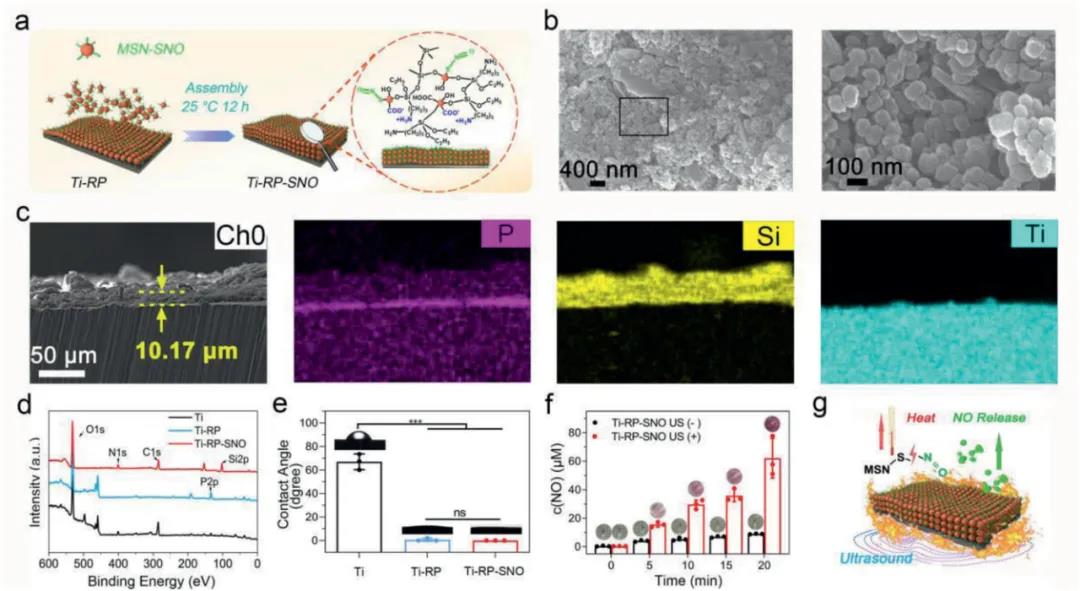Wu Shuilin/Liu Xiangmei Adv. Mater: Ultrasonic interface engineered red phosphorus-metal material for effective antibacterial
QQ Academic Group: 1092348845
Detailed
Sonodynamic therapy (SDT) has strong penetrating ability and biological safety, and is considered to be an effective method to treat a variety of diseases including cancer and bacterial infections, but its efficiency is still affected by the hypoxic microenvironment of deep tissues. limit. Through the development of metal-red phosphorous (RP) materials engineered by ultrasonic interface, Professor Liu Xiangmei of Hubei University and Professor Wu Shuilin of Tianjin University proposed an efficient solution-sonothermal therapy. This method is more effective than using metal alone. Ultrasonic (US) excitation has an increase of more than 20°C in sonothermal ability after 25 minutes.

Key points of this article:
(1) The mechanism of this method is that the mechanical energy of the US can activate the movement of interface electrons. In RP, the electron motion induced by US can effectively convert US energy into heat and lattice vibration, so that the metal-RP absorbs US more strongly. Unlike the non-specific heat caused by the ultrasonic cavitation effect, US can penetrate 2.5 cm of pork tissue to excite titanium-RP in situ to generate heat.

(2) The research results show that this method can successfully eliminate bone infection caused by multi-drug resistant Staphylococcus aureus (MRSA) within 20 minutes through in vivo acoustic and thermal therapy, without causing tissue damage. Therefore, this research provides a new strategy for the use of US interface engineering technology to achieve acoustothermal treatment of MRSA.
references:
Wei Guan. et al. Ultrasonic Interfacial Engineering of Red Phosphorous–Metal for Eradicating MRSA Infection Effectively. Advanced Materials. 2020
DOI: 10.1002/adma.202006047
https://onlinelibrary.wiley.com/doi/10.1002/adma.202006047
- Previous: Chondroitin sulfate-ba
- Next: A Rising 2D Star: Nove


 Academic Frontier
Academic Frontier
